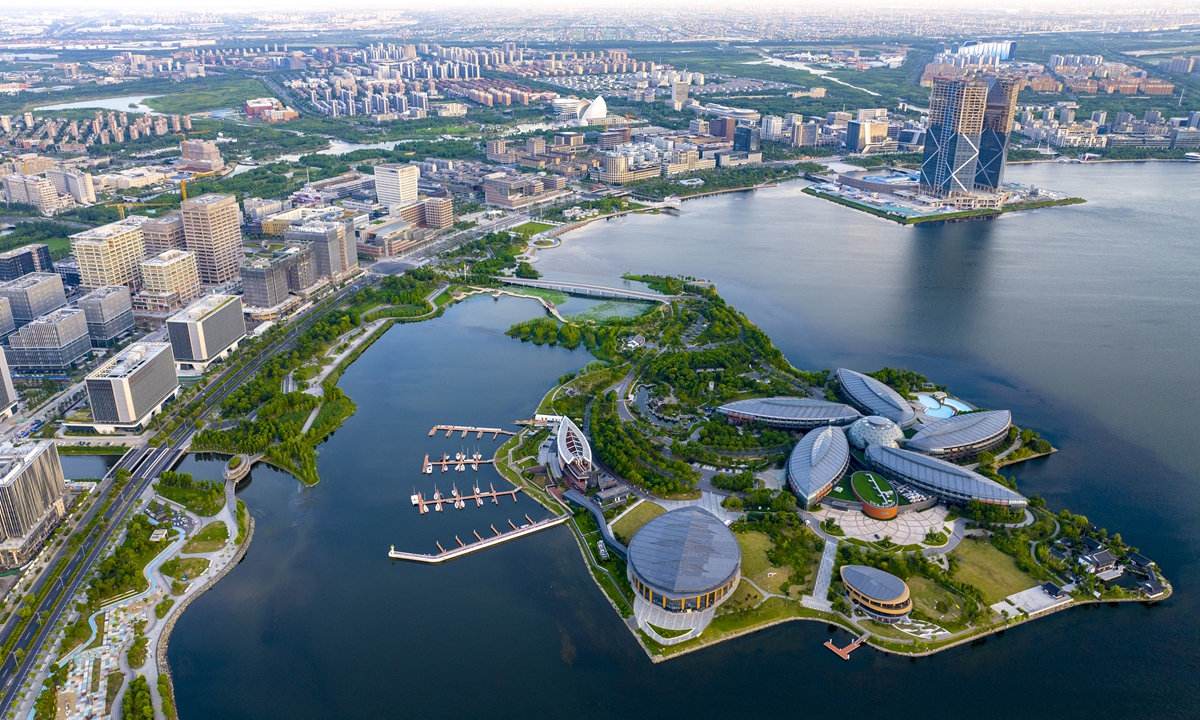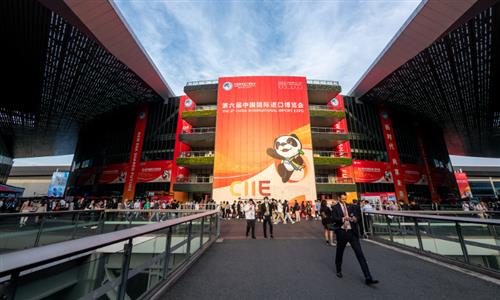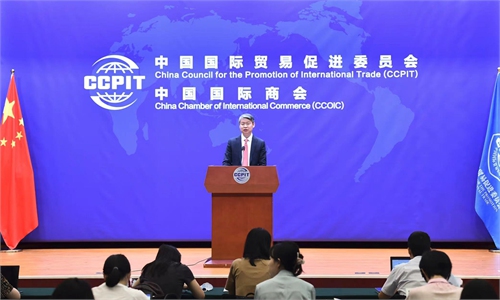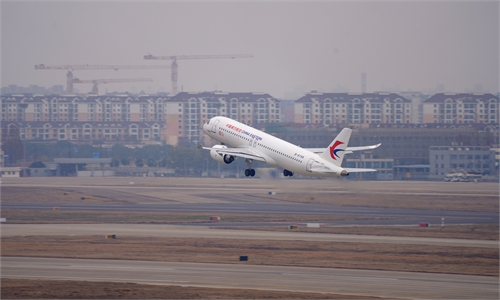
A view of the Lingang New Area of Shanghai Free Trade Zone, on July 8, 2024 Photo: VCG
During the just-concluded China International Fair for Trade in Services, an alliance for global services providers was officially initiated in the Hainan Free Trade Port (FTP) to share new opportunities for building the Hainan FTP with professional services providers.
The first batch of 10 professional services institutions from home and abroad, including Bank of China, China Galaxy Securities, EY, King & Wood Mallesons and Dun & Bradstreet, have joined the alliance.
Promoting high-quality opening-up has always been a major theme of China's economic development paradigm, analysts said.
The new international services alliance set up in the Hainan FTP is only one of the latest examples of China's opening up to foreign businesses. The growth of multinational companies and China's free trade zones (FTZs) has been mutually reinforcing, as demonstrated over the years.
Rapid rise of Lingang
In Shanghai, one of China's most dynamic industrial hubs, the Lingang Special Area of the China (Shanghai) Pilot FTZ celebrated its fifth anniversary in August.
Global shipping giant Maersk has been actively involved in the growth and development of the Lingang zone, including the establishment of its first green smart logistics center there, which is expected to be completed at the end of 2024. Maersk also inaugurated a new international transshipment consolidation center in Lingang earlier this year.
Medtronic - a global healthcare technology leader, is the first foreign-funded Fortune 500 medical technology firm to settle in Shanghai's Lingang New Area, the company told the Global Times.
In April 2023, the Medtronic medical science and technology industry base started the construction of its first production line in Lingang. Just 11 months later, the first product rolled off the production line.
"The rapid progress of Medtronic's Lingang industrial base has impressed us a lot, indicating Shanghai speed and Chinese vitality," Alex Gu, president of Medtronic Greater China, told the Global Times in a recent interview.
According to Medtronic, its new base in Lingang is now becoming a hub for high-end medical technology research and localized production, focusing on heart disease treatment.
Also, Tesla's story further highlights the success of China's FTZs. In 2018, China lifted restrictions on the establishment of wholly foreign-owned new-energy vehicle (NEV) companies.
Tesla signed an agreement with the Shanghai municipal government in July 2018 to build its first overseas Gigafactory in Lingang. Construction of the plant began in January 2019, the initial production began in October, and its first NEV rolled off the assembly line in December 2019, less than a year after groundbreaking. The Shanghai factory created a miracle by enabling Tesla to realize mass production within one year.
In 2023, Tesla's Shanghai Gigafactory delivered 947,000 NEVs, an increase of 33 percent year-on-year, accounting for more than half of its global production capacity, according to the Xinhua News Agency.
In May this year, Tesla's mega battery plant in Shanghai has obtained a construction permit, making it the first energy storage mega project outside the US. The plant is expected to enter production in the first quarter of 2025.
High-quality opening-up
For more than four decades, China has been exploring a path of opening-up with Chinese characteristics and actively participating in international economic cooperation.
During a key policy meeting held in July, China, a major contributor to global economic growth, reaffirmed its firm commitment to opening-up, which will provide many opportunities to global companies willing to invest in China's huge market.
The country's renewed plan for accelerating reform and opening-up is outlined in a document released after the third plenary session of the 20th Communist Party of China Central Committee, which was held in July in Beijing.
"We will expand our globally-oriented network of high-standard free trade areas, establish compliance mechanisms that are aligned with prevailing international rules, and optimize the environment for opening-up and cooperation," read a resolution adopted at the meeting.
Chinese analysts said that such a renewed plan will require the FTZs to explore new ways and set an example for further deepening reform in an all-round way.
In recent years, China has made solid strides in upgrading its FTZs and FTPs.
Currently, the 22 pilot FTZs across the country have continuously extended and improved their supply chains and significantly strengthened their industrial competitiveness.
For example, Hainan FTP's trade in services has grown significantly, jumping from 18.5 billion yuan ($2.6 billion) in 2020 to 45.8 billion yuan in 2023, with an average annual growth rate of 35.28 percent, official data showed.
The pilot FTZ in North China's Tianjin Municipality focused on the development of the financial leasing industry, becoming the world's second-largest aircraft leasing hub.
The pilot FTZ in Central China's Hubei Province gathered more than 16,000 optoelectronic information enterprises, becoming the largest technology research and development and production base in the field of optical communication in China.
The pilot FTZ in East China's Jiangsu Province gathered nearly 4,000 biomedical enterprises with an annual output value of nearly 300 billion yuan.
The growth potential of the 22 FTZs is expected to continue to attract more foreign-funded enterprises to invest there and reap profits.
In the first half of 2024, the actual use of foreign capital in the 22 pilot FTZs reached 103.96 billion yuan, accounting for 20.8 percent of the country's total foreign investment, according to statistics from the Ministry of Commerce.



